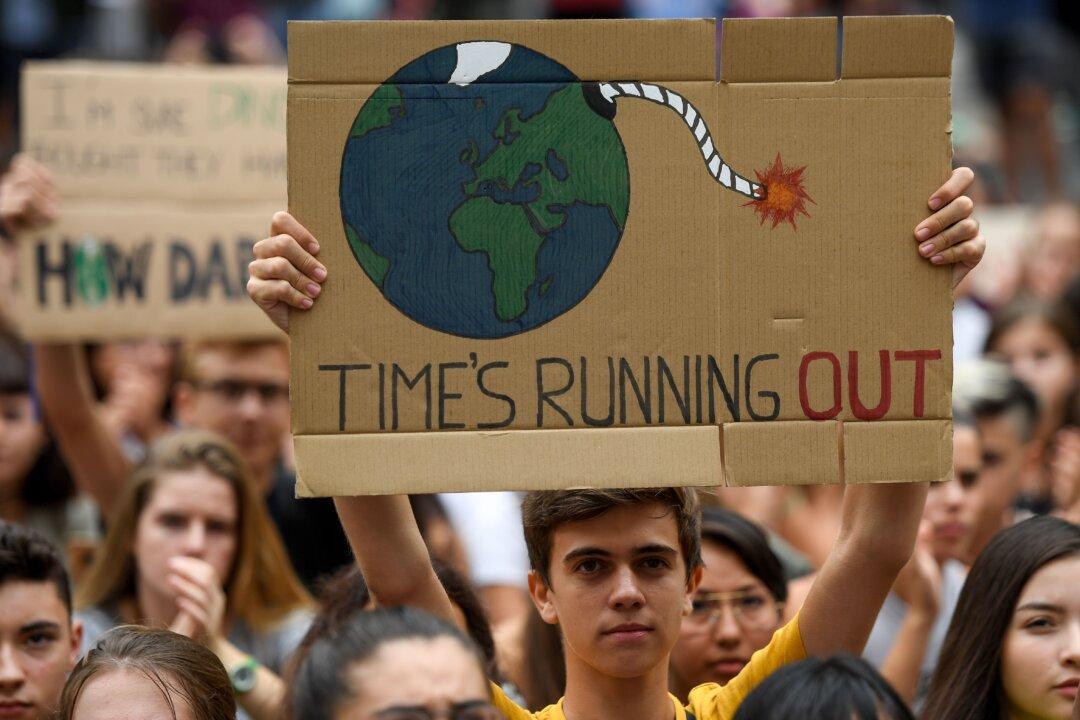Back in April of 2013, NDP leader Thomas Mulcair went down to Washington to rubbish Canada’s environmental reputation before its greatest trading partner. Now, the stomp-Canada shoe is on a different wearer: Marc Jaccard, a professor at Simon Fraser University, has gone down to the States to sing Canada’s, well, evils.
“On climate, Canada is a rogue state,” Jaccard said. “It’s accelerating the global tragedy . . . The U.S. government should reject Keystone XL and explain to the Canadian government that it hopes to join with Canada (on a global climate plan).”
So what has this “rogue state” actually done, with regard to climate change? As Environment Canada observes, Canada’s greenhouse gas (GHG) levels peaked in 2007, and have been flat or declining since then on a total-mass basis, on a per-capita basis, and on the basis of emissions per unit of economic productivity:
Canada’s GHG emissions are increasingly becoming decoupled from economic growth. Even though the economy grew by 6.3 per cent between 2005 and 2010, GHG emissions decreased by 48 megatonnes (Mt) or 6.5 per cent. Between 2005 and 2010, Canada’s GHG emissions for each billion dollars of gross domestic product (GDP) that Canada produced declined by about 12 per cent and GHG emissions per person have declined by about 11 per cent. These per-capita emissions are at a historic low of 20.3 tonnes (t) of carbon dioxide equivalent per person. This is the lowest level recorded since tracking began in 1990. In 2010, per capita emissions of CO2 were 2.6 t lower than in 2005.
But what about the oil sands? In November of 2013, Fatih Birol, chief economist for the International Energy Agency, observed that the key factors in the climate change predicted by the IEA will not be the oil sands–rather, it will be the consumption of coal and oil as Asia continued its economic development:
“The oil sands definitely makes a contribution to the increase in CO2 emissions,” he said.
“But the difference in getting oil from oil sands when compared to conventional oil, it is such a small contribution that it will be definitely wrong to highlight this as a major source of carbon dioxide emissions worldwide.”
Jaccard, in vilifying Canada for hewing to a “made in Canada” approach to greenhouse gas control rather than signing on with some king of global accord, is doing his country a disservice. Canada, as the United States, Russia, and Japan have done, has decided to find its own pathway on climate policy rather than blindly follow the repeatedly failed Kyoto framework that has become a farcical (and cynical) exercise in which developing countries try to extort wealth from developed countries in the name of climate change. Emission trajectories in both Canada and the U.S. are declining, particularly in the U.S., which never went the Kyoto way.
While Jaccard’s call to prevent development of the oil sands would not lead to meaningful climate benefits, it would certainly lead to meaningful economic losses.
According to the Canadian Association of Petroleum Producers, production of oil from Alberta’s oil sands is expected to more than double by 2030, rising from the 2012 level of 3.2 million barrels of oil per day to 6.7 million barrels per day.
In 2011, the Canadian Energy Research Institute projects that investments and revenues from new oil sands projects would be approximately $2 trillion over the period from 2010 to 2035, with a total GDP impact of $2.1 trillion in Canada. Employment, both direct and indirect, stemming from new oil sands investments is projected to grow to over 900,000 jobs by 2035 from 75,000 jobs in 2010. And CERI’s estimate is somewhat more conservative than CAPP’s, estimating oil production at only 5.4 million barrels per day by 2035.
And it’s not only Alberta that stands to profit. The Conference Board of Canada estimates that 25 per cent of the spending on the oil sands supply chain will happen in other Canadian provinces: about 15 per cent in Ontario, 7 per cent in B.C., 4 per cent in Quebec and the prairies, and about 1 per cent in Atlantic Canada.
Like Mulcair, Jaccard has gone down to Washington to try to shame Canada into walking away from a prospective source of prosperity and employment for the people of Canada. He does his country no service tossing around overheated rhetoric which only arms Canada’s competitors and critics against her best interests.
Kenneth P. Green is Senior Director, Natural Resource Studies at the Fraser Institute.


